Related Research Articles

The White Ribbon Association (WRA), previously known as the British Women's Temperance Association (BWTA), is an organization that seeks to educate the public about alcohol, tobacco, and other drugs, as well as gambling.

Newark Female Charitable Society was founded by the leading women of Newark in 1803, making it the oldest social organization in New Jersey and the third oldest in the United States. Its complex of buildings was added to the National Register of Historic Places in 1979.

Charles Sprague Smith (1853-1910) was a Columbia University professor, best known for being the founder and director of the People's Institute.
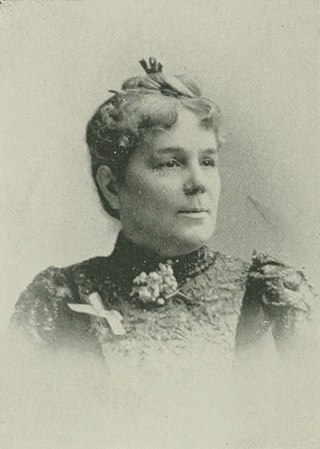
Mary Towne Burt was a 19th-century American temperance reformer, newspaper publisher, and benefactor from Ohio. Burt was identified with temperance work nearly all her life. She was the first president of the Auburn, New York branch of the Women's Christian Temperance Union, and beginning in 1882, served as president of the New York State Society of the Union. In 1875, she became the publisher, and subsequently the editor, of Our Union, the organ of the society, and in 1878–80 was the corresponding secretary of the National Union. For several years, Burt had charge of the legislative interests of the union, and several laws for the protection of women and young girls resulted from her efforts.
The Woman's Press Club of New York City (WPCNYC) was an American professional association for women journalists and authors. Located at 126 East 23rd Street, in Manhattan, the organization was founded by Jane Cunningham Croly in Manhattan in November 1889, incorporated in 1919, and dissolved on 8 March 1980.
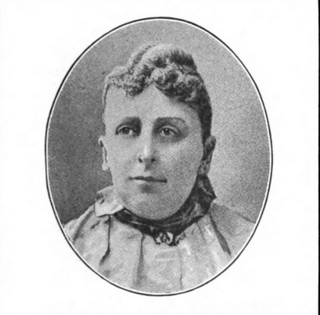
Harriet Abbott Lincoln Coolidge was an American philanthropist, author and reformer. She did much in the way of instructing young mothers in the care and clothing of infants, and furthered the cause to improve the condition of infants in foundling hospitals. She contributed a variety of articles on kindergarten matters to the daily press, and while living in Washington, D.C., she gave a series of "nursery talks" for mothers at her home, where she fitted up a model nursery. Coolidge was the editor of Trained Motherhood; and author of In the Story Land, Kindergarten Stories, Talks to Mothers, The Model Nursery, and What a Young Girl Ought to Know. She was one of the original signers of the Society of the Daughters of the American Revolution, and was an active member of four of the leading charity organizations in Washington. She died in 1902.

Emma Beckwith was an American suffragette, bookkeeper, optician, and inventor.

Lucretia Longshore Blankenburg was an American second-generation suffragist, social activist, civic reformer, and writer. During the period of 1892 until 1908, she served as president of the Pennsylvania Woman Suffrage Association.

Fanny Purdy Palmer was an American author, poet, journalist, lecturer, social activist, and clubwoman. She began club work in 1876 and was one of the originators of the General Federation of Women's Clubs. She served as president of the Rhode Island Woman's Club, was a member of the school committee of the city of Providence, Rhode Island, and was connected with various philanthropic and social movements, including women's suffrage. A diligent reader of some of the best scientific and metaphysical works, for many years, she was a writer of stories which appeared in various weekly and monthly publications, stories which have dealt with the problems of life.
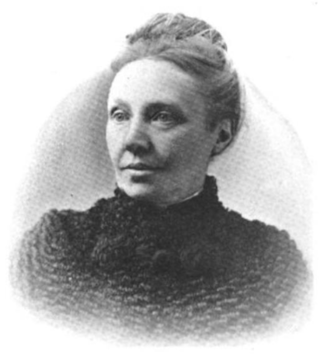
Jennie Maria Drinkwater Conklin was a 19th-century American author and social activist. While still in her teens, she became known for her stories for children. She wrote books for girls as well as for the religious press. Conklin was the originator of the organization known as the Shut-in Society, which was a bureau of correspondence for disabled women and girls.
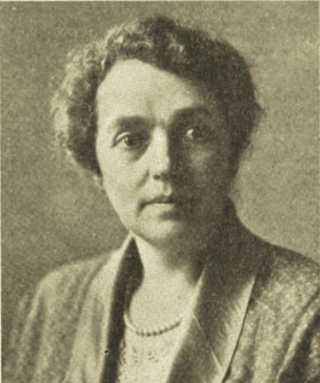
Suessa Baldridge Blaine was an American writer of temperance pageants. She was connected with the Federated Woman's Clubs and organizations.

Orange Valley Social Institute was an American settlement house established during the settlement movement era to provide educational and social opportunities for the people of the neighborhood. It was located close to Newark in The Oranges' hatting district at No. 35 Tompkins street, Orange Valley, New Jersey. Opened April 1, 1897, under the auspices of a committee of citizens of Orange, New Jersey, it was later governed by a Board of Directors of the Settlement Association. It was maintained by private contributions. Head residents included Bryant Venable, The settlement contained a kindergarten, boys' games club, basket weaving club, shuffleboard club, mothers' meetings, chair caning club, bowling club and a library. In the first nine months of 1902, 497 persons borrowed 3,568 books, while there was an average daily attendance of about 30 at the reading rooms.
Neighborhood House is an American community center located in Louisville, Kentucky. Founded in 1896, as North Broadway Social Settlement it was renamed Neighborhood House in 1902, when it incorporated.
Whittier House was an American social settlement, situated in the midst of the densely populated Paulus Hook district of Jersey City, New Jersey. Christian, but non-denominational, its aims were to help all in need by improving their circumstances, by inspiring them with new motives and higher ideals, and by making them better fitted by the responsibilities and privileges of life. It cooperated with all who were seeking to ameliorate the human condition and improve the social order. It opened in the People's Palace, December 20, 1893. On May 14, 1894, it incorporated and moved to 174 Grand Street.

Civic Service House was an American social settlement and a school for citizenship, located at 110-112 Salem Street, Boston, Massachusetts. Established October, 1901, by Pauline Agassiz Shaw as a center for civic education, recreation, and organization for the common good. The house set out to do specialized settlement work along civic lines, and purposed to reach a constituency approaching or within the privileges of citizenship. The character of work was that with adult immigrants, in clubs, classes, lectures and civic committees. The constituency included Jews, Italians, Poles and Irish. Improvement clubs, educational classes for men and women, occasional concerts and recreational features were available, but these were subordinate to the effort for civic betterment. Children's work was not included, and social features were made incidental to a program of study and service.
Lowell House was an American social settlement, the first in New Haven, Connecticut. Established in 1900, it formed an association in 1903.

South Park Settlement was an American settlement movement-era settlement established in the South Park neighborhood of San Francisco, California on January 2, 1895, by the San Francisco Settlement Association. It was founded in one of the crowded districts of San Francisco. The pretty little oval park on which the Settlement House faces was formerly the fashionable residence district of the city. But within a few blocks on either side of South Park were many little streets, whose crowded tenements furnished homes for less prosperous working people. Its goals were to establish and maintain a settlement in San Francisco as a residence for persons interested in the social and moral condition of its neighborhood; to bring into friendly and helpful relations with one another the people of the neighborhood in which the settlement was situated; to cooperate with church, educational, charitable and labor organizations, and with other agencies acting for the improvement of social conditions; to serve as a medium among the different social elements of the city for bringing about a more intelligent and systematic understanding of their mutual obligations; as well as to do social and educational work in the neighborhood; co-operate in the civic work of the city; and investigate social and economic conditions.
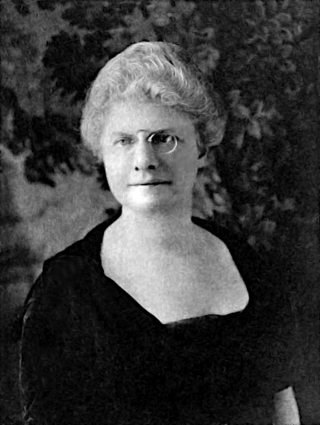
Mary L. Langworthy was an American dramatic coach, writer, lecturer, clubwoman, and civic leader. She lived in Chicago, Illinois, where she wrote and directed patriotic and educational pageants. She also served in an executive capacity for many organizations, including president of the Illinois Congress of Mothers and Parent–teacher association, and president of the Chicago Woman's Club (1924-25).
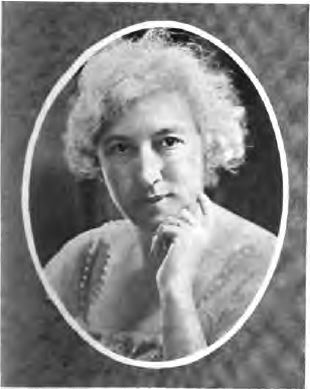
Grace Hyde Trine, American writer, lecturer, and dramatic reader, was an authority on pageantry. She spent a large part of her time in giving interpretations of poetry.

Ida Wharton Dawson was an American social worker and clubwoman. Her activities were in the recent club and uplift movements of the state, serving as President of the New Jersey State Federation of Women's Clubs.
References
- ↑ "Women's Club". Brooklyn Life. Brooklyn life. 51 (1310): 22. 10 April 1915. Retrieved 4 September 2023.
 This article incorporates text from this source, which is in the public domain .
This article incorporates text from this source, which is in the public domain . - 1 2 3 4 5 6 7 8 9 10 11 12 Folsom, Joseph Fulford; Fitzpatrick, Benedict; Conklin, Edwin P. (1925). "Chapter XXVIII. Growth and Development of Women's Clubs, by Irene Rutherford O'Crowley". The Municipalities of Essex County, New Jersey, 1666-1924. Vol. 2. Lewis historical publishing Company, Incorporated. pp. 491–92. Retrieved 4 September 2023.
 This article incorporates text from this source, which is in the public domain .
This article incorporates text from this source, which is in the public domain . - ↑ "IDA WHARTON DAWSON (Mrs. Henry Hollister Dawson)". Scannell's New Jersey's First Citizens and State Guide. Vol. 1. 1917. pp. 55–56. Retrieved 2 September 2023.
 This article incorporates text from this source, which is in the public domain .
This article incorporates text from this source, which is in the public domain .